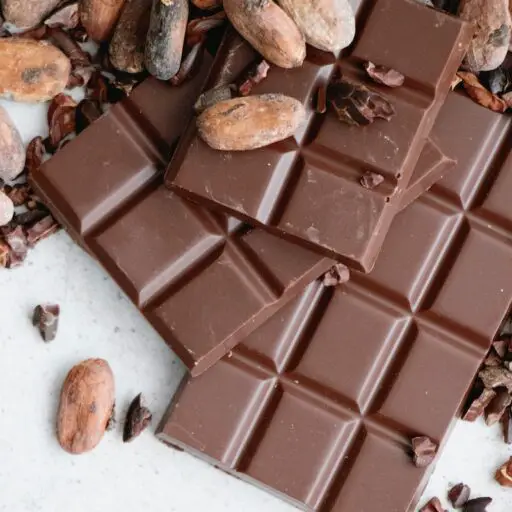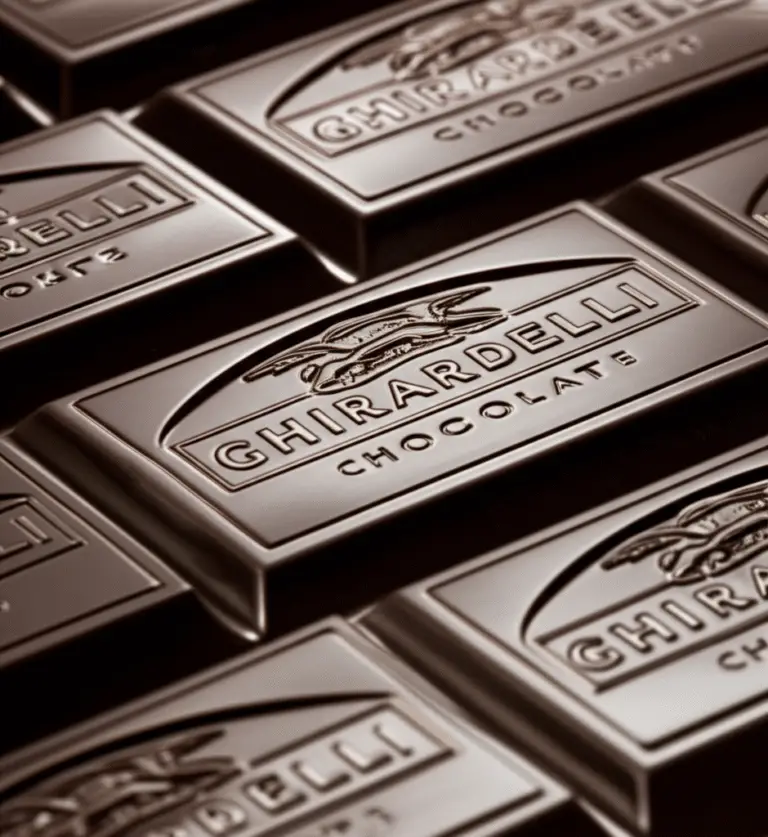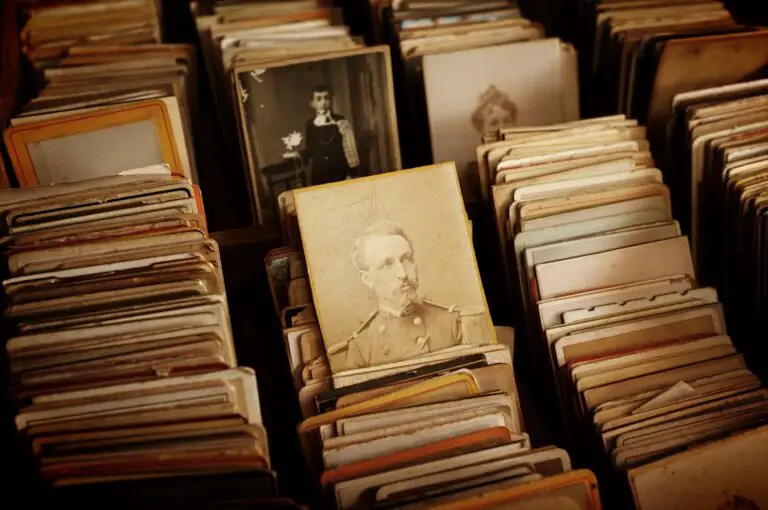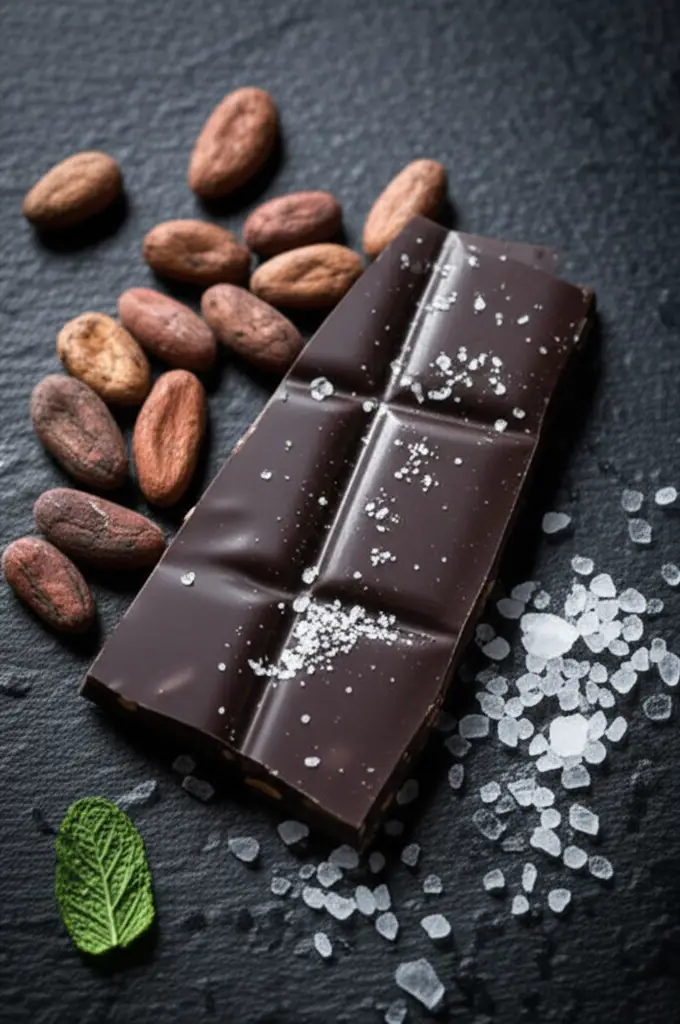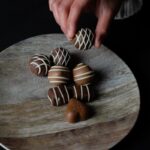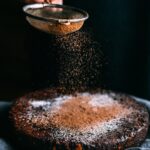Support our educational content for free when you purchase through links on our site. Learn more
What Is High Quality Chocolate? 10 Secrets You Must Know 🍫 (2025)
Have you ever unwrapped a chocolate bar expecting a heavenly experience, only to be met with a waxy texture and a flat, overly sweet taste? You’re not alone. At Chocolate Brands™, we’ve tasted hundreds of chocolates—from mass-market to artisan—and discovered what truly separates high quality chocolate from the rest. Spoiler alert: it’s not just about a high cocoa percentage or fancy packaging.
In this ultimate 2025 guide, we’ll reveal the 10 unmistakable signs of premium chocolate, dive into the fascinating history behind the bean-to-bar journey, and share expert tips on how to pick, taste, and savor chocolates like a pro. Curious about why some chocolates snap perfectly while others crumble? Or how the aroma can tell you more than the label ever will? Keep reading—we’ll unlock these secrets and more, including a deep dive into brands like Cococo and Läderach that set the gold standard.
Key Takeaways
- High quality chocolate starts with pure, natural ingredients: Look for cocoa beans, cocoa butter, and minimal additives. Avoid vegetable fats and artificial flavors.
- The perfect snap and glossy sheen signal expert tempering and cocoa butter content.
- Complex aromas and evolving flavors are hallmarks of premium chocolate, reflecting bean origin and artisan craftsmanship.
- Proper storage is essential to maintain chocolate’s texture and flavor—never refrigerate!
- Top brands like Valrhona, Amedei, and Cococo consistently deliver excellence through ethical sourcing and meticulous production.
Ready to taste the difference?
👉 Shop high-quality chocolate from:
- Valrhona on Amazon | Valrhona Official Website
- Amedei on Amazon | Amedei Official Website
- Läderach Official Website
- Cococo Official Website
Table of Contents
- ⚡️ Quick Tips and Facts About High Quality Chocolate
- 🍫 The Rich History and Origins of Premium Chocolate
- 🔍 How to Check the Ingredients for Top-Tier Chocolate
- 👀 Evaluating the Appearance: What High Quality Chocolate Looks Like
- 👃 The Art of Sniffing: Unlocking Chocolate’s Aroma Secrets
- 👅 Taste Test Techniques: Savoring the Flavors of Quality Chocolate
- ✋ Feeling the Texture: What Your Fingers Tell You About Chocolate
- 🌟 What Truly Makes Chocolate Good? The Science and Craft Behind Excellence
- 🍬 10 Signs You’re Eating High Quality Chocolate (And Not Impostors!)
- 🥂 Treat Yourself: Best Occasions to Indulge in Gourmet Chocolate
- 🌱 Health Benefits of Adding Vegan-Friendly Chocolate to Your Diet
- 🎁 Benefits of Customization in Corporate Chocolate Gifts: Impress with Quality
- 🍫 About Cococo: A Case Study of Artisan Chocolate Excellence
- 🛠️ Support and Storage Tips to Keep Your Chocolate at Peak Quality
- 📚 Conclusion: Mastering the Art of Choosing High Quality Chocolate
- 🔗 Recommended Links for Chocolate Lovers and Experts
- ❓ FAQ: Your Burning Questions About High Quality Chocolate Answered
- 📖 Reference Links: Trusted Sources Behind Our Chocolate Expertise
Here is the main body content for your article, crafted by the expert team at Chocolate Brands™.
Welcome, fellow chocolate aficionado! You’ve come to the right place. We’re the tasting team at Chocolate Brands™, and we’ve dedicated our careers (and our taste buds) to one noble pursuit: separating the divine from the duds in the world of chocolate. Have you ever unwrapped a bar, expecting a moment of pure bliss, only to be met with a waxy, overly sweet disappointment? We’ve been there. It’s a tragedy!
But what actually separates a bar of world-class chocolate from its sad, dusty shelf-mate? Is it the price? The fancy wrapper? The country of origin? The answer, like a fine dark chocolate, is complex, rich, and deeply satisfying. Stick with us, and we’ll turn you into a chocolate connoisseur, able to spot quality from a mile away.
⚡️ Quick Tips and Facts About High Quality Chocolate
In a hurry? Here’s the cheat sheet. Think of this as the trailer for the main feature. We’ll unpack all of this glorious info in the sections below.
| Fact Category | The Delicious Detail |
|---|---|
| Key Ingredient | Cocoa Butter is King! 👑 High-quality chocolate uses pure cocoa butter for its melt-in-your-mouth texture. Cheaper chocolate often substitutes it with vegetable fats like palm oil. |
| The “Snap” Test | A sharp, crisp “snap” when you break a piece is a hallmark of well-tempered, high-quality chocolate. A dull thud or a crumbly break? 🚩 Red flag! |
| Ingredient List | Fewer is better. The best chocolates have a short, simple ingredient list. Look for: cocoa beans (or mass/liquor), sugar, cocoa butter, maybe an emulsifier like lecithin, and natural vanilla. |
| Cocoa Percentage | A higher percentage isn’t always better, but it indicates a higher proportion of actual cocoa. A 70% bar from one brand can taste wildly different from another’s, based on bean quality and origin. |
| The “Bloom” | That whitish or grayish film on chocolate is called bloom. It’s not mold, but it indicates poor storage (temperature fluctuations) and affects texture. Top-tier chocolate should be glossy and free of bloom. |
Quick Tips for Your Next Chocolate Run:
- Read the label first. If sugar is the first ingredient, put it back. You’re buying candy, not chocolate.
- Look for the origin. Does it say where the beans are from? Single-origin chocolates (e.g., from Madagascar or Ecuador) often signal a higher level of care and quality.
- Trust your senses. Good chocolate looks glossy, smells complex and inviting, and feels smooth, not waxy.
- Wondering about popular brands? We get asked a lot, “Is Lindt a high quality chocolate?” While it’s a great entry point into better chocolate, the world of artisan chocolate goes much, much deeper. You can read our full breakdown in our dedicated Lindt review.
🍫 The Rich History and Origins of Premium Chocolate
To truly understand high-quality chocolate, you have to appreciate its epic journey through time. This isn’t just a candy; it’s a food with a soul, a history steeped in ritual, currency, and conquest. For more deep dives, check out our articles on Chocolate History and Origins.
From Bitter Drink to Royal Treat
Long before it was a bar, chocolate was a beverage. The ancient civilizations of Mesoamerica, like the Maya and Aztecs, revered the cacao bean. They ground it into a paste, mixed it with water, chili peppers, and cornmeal, and frothed it into a bitter, invigorating drink. This wasn’t a sweet treat; it was a sacred elixir, a status symbol, and even a form of currency. According to the Smithsonian Magazine, the Aztecs valued cacao beans more than gold!
When Spanish explorers brought cacao back to Europe in the 16th century, they kept the “beverage” idea but ditched the chili peppers, adding sugar and spices like cinnamon. It became an exclusive, aristocratic luxury. The leap to solid chocolate as we know it didn’t happen until the 19th century, thanks to innovations like the cocoa press (which separated cocoa butter from the solids) and conching (a process of intense mixing that creates a smooth texture).
The Importance of Terroir
Why does this history matter? Because the very best chocolatiers today honor this legacy. They understand that, like wine, chocolate has terroir. This means the environment where the cacao is grown—the soil, the climate, the altitude—profoundly impacts the flavor of the beans.
As the experts at Läderach note, “Anyone looking to create the best chocolate has to start with the best cocoa beans.” They specifically source from high-quality regions like Ecuador, Madagascar, and Ghana. A bean from Madagascar might have bright, red fruit notes, while one from Ecuador could be more floral and nutty. This is why “single-origin” is a term you’ll see on high-quality bars; it’s a celebration of a specific region’s unique flavor profile.
🔍 How to Check the Ingredients for Top-Tier Chocolate
Alright, team, let’s get forensic. The ingredients list is the single most revealing part of a chocolate bar’s packaging. It’s where brands show their true colors. Here’s what to look for.
| The Good Stuff ✅ | The Red Flags ❌ |
|---|---|
| Cocoa (Beans, Mass, Liquor, Nibs): This should be the first ingredient. It’s the pure, unadulterated essence of the chocolate. | Sugar as the First Ingredient: This means you’re eating more sugar than actual chocolate. It’s a candy bar, not fine chocolate. |
| Cocoa Butter: The natural fat of the cocoa bean. It’s responsible for that luxurious, melt-in-your-mouth feel. It’s expensive, so its presence is a great sign. | Vegetable Fats (Palm Oil, Shea, etc.): A dead giveaway of cheap chocolate. These are used to replace expensive cocoa butter, resulting in a waxy texture and greasy aftertaste. |
| Sugar: A necessary component, but it shouldn’t dominate. Cane sugar is a good sign. | Artificial Flavors (e.g., Vanillin): Vanillin is a cheap, synthetic substitute for real vanilla. It gives a one-note, cloying sweetness. |
| Natural Vanilla: Real vanilla complements and enhances the chocolate’s flavor without overpowering it. | High Fructose Corn Syrup: An absolute no-go. This is a cheap sweetener used in mass-market junk food. |
| Lecithin (Soy or Sunflower): An emulsifier used in small amounts to improve texture and consistency. It’s generally acceptable, even in high-end bars. | Milk Substitutes / Fillers: In milk chocolate, look for real milk or milk powder. Avoid strange fillers. |
The chocolatiers at Cococo put it perfectly: bad chocolate often contains “inferior cocoa beans, excessive sugar, vegetable oils instead of cocoa butter, and artificial additives.”
Let’s take a look at a real-world example. A bar from Scharffen Berger, a respected name in American Chocolate Brands, might list: Cacao Beans, Sugar, Cocoa Butter, Non-GMO Soy Lecithin, Vanilla Beans. Clean. Simple. Beautiful. Now compare that to a generic candy bar, and the difference is stark. For more head-to-head analyses, see our Chocolate Brand Comparisons.
👀 Evaluating the Appearance: What High Quality Chocolate Looks Like
Before you even taste it, your eyes can give you major clues. We eat with our eyes first, and high-quality chocolate is dressed for the occasion.
- The Shine: ✅ A top-tier chocolate bar should have a beautiful, satin-like gloss. This isn’t just for looks; it’s a sign of good tempering. Tempering is a precise heating and cooling process that stabilizes the cocoa butter’s crystals, leading to a great snap, smooth melt, and that signature sheen.
- The Color: ✅ The color should be rich and uniform. A dark chocolate will be a deep, warm brown. A milk chocolate will be lighter, but still consistent. Streaks or splotches can indicate improper mixing or cooling.
- The Surface: ✅ Look for a smooth, unblemished surface. Bubbles, cracks, or a gritty look can be signs of a rushed or sloppy manufacturing process.
- The Bloom: ❌ Have you ever seen a chocolate bar with a dusty, whitish-gray coating? That’s bloom.
- Fat Bloom: Caused by temperature fluctuations, where the cocoa butter separates and rises to the surface. It feels greasy.
- Sugar Bloom: Caused by moisture, where sugar crystallizes on the surface. It feels gritty.
While bloom doesn’t mean the chocolate is spoiled, it’s a sign of poor handling or storage, and it’s certainly not something you’ll find on a premium product from a careful chocolatier. As Cococo notes, good chocolate has a “smooth and glossy appearance” with “no blemishes or whitish discoloration.”
👃 The Art of Sniffing: Unlocking Chocolate’s Aroma Secrets
Don’t just stare at it—get your nose in there! The aroma of chocolate is a huge part of the experience and a massive indicator of quality.
How to Properly Sniff Your Chocolate:
- Break it. Snap off a piece. This releases the volatile aromatic compounds trapped inside.
- Cup it. Hold the piece in your hand and cup your other hand over it, creating a little aroma chamber.
- Inhale. Bring it to your nose and take a deep, slow sniff.
What are you looking for? Complexity. High-quality chocolate can have an astonishing range of scents. We’ve sniffed bars with notes of:
- Fruity: Cherry, raspberry, citrus
- Nutty: Toasted almond, hazelnut, walnut
- Earthy: Leather, tobacco, fresh soil
- Floral: Rose, orange blossom
- Spicy: Cinnamon, clove
- Classic “Chocolaty”: A deep, roasted brownie or coffee scent.
What does bad chocolate smell like? Not much. Maybe a faint, one-dimensional sweetness, a hint of plastic from the wrapper, or a waxy, crayon-like smell. If it smells like nothing but sugar, that’s a bad sign. The aroma should be an invitation, a preview of the complex flavors to come.
👅 Taste Test Techniques: Savoring the Flavors of Quality Chocolate
This is the moment we’ve all been waiting for. But don’t just chomp it down! To truly appreciate fine chocolate, you need to taste it like a pro.
The Chocolate Brands™ 5-Step Tasting Method:
- Cleanse Your Palate. Start with a neutral palate. A sip of room-temperature water or a bite of an unsalted cracker works wonders.
- The Snap. Break a piece and listen for that satisfying snap. We covered this, but it’s part of the ritual!
- Let It Melt. Place the piece on your tongue and resist the urge to chew. Let your body heat slowly melt the chocolate. This is where the magic happens. The cocoa butter will coat your mouth, releasing the full spectrum of flavors.
- Aerate. As it melts, gently draw some air into your mouth, as if you’re sipping wine. This helps the aromatic compounds travel to your olfactory system, enhancing the flavor.
- Notice the Journey. Pay attention to how the flavor evolves. Does it start one way and finish another? A great chocolate will take you on a journey. Notice the finish, or aftertaste. Does the flavor linger pleasantly, or does it vanish instantly, leaving a waxy or sugary residue?
A high-quality chocolate will have a complex, evolving flavor profile. As the artisans at La Maison du Chocolat describe it, it’s a “symphony of meticulously balanced flavors.” You’re not just tasting “chocolate”; you’re tasting the bean’s origin, the roaster’s skill, and the chocolatier’s art. For our tasting notes on specific bars, check out our Chocolate Bar Reviews.
✋ Feeling the Texture: What Your Fingers Tell You About Chocolate
Texture, or mouthfeel, is the final piece of the sensory puzzle. It’s how the chocolate feels as it melts in your mouth.
- The Ideal Texture: ✅ Smooth, velvety, creamy. It should coat your tongue evenly without any graininess or grit. This luxurious feeling is the result of finely ground cocoa particles and, most importantly, a high content of pure cocoa butter. The team at Cococo describes this perfectly as a texture that “melts quickly and feels smooth and velvety on the tongue.”
- The Unwanted Textures: ❌
- Waxy or Greasy: This is the calling card of vegetable fats being used instead of cocoa butter. It doesn’t melt cleanly and can leave an unpleasant film in your mouth.
- Gritty or Chalky: This indicates either poorly ground cocoa beans, the presence of sugar bloom, or a generally low-quality manufacturing process.
- Doesn’t Melt: If you have to chew the chocolate to break it down, it’s likely low in cocoa butter. Good chocolate should begin to melt from the warmth of your fingers alone.
🌟 What Truly Makes Chocolate Good? The Science and Craft Behind Excellence
So, we know what to look for on the label and in the bar itself. But what happens before all that? The true quality of chocolate is forged long before it’s molded and wrapped.
From Bean to Bar: The Critical Steps
- Sourcing & Terroir: As we mentioned, it starts with the bean. Great chocolatiers have direct relationships with their farmers, ensuring ethical practices and high-quality beans from specific regions.
- Fermentation & Drying: This is arguably the most critical step for flavor development. After being harvested, the wet cacao beans are fermented, usually in wooden boxes covered with banana leaves. This process, which can last for several days, develops the precursor compounds that will later become the complex “chocolaty” flavors we love. Improper fermentation can lead to bitter or acidic chocolate. According to the Fine Cacao and Chocolate Institute (FCCI), this stage is where much of the magic (or disaster) happens.
- Roasting: Like coffee beans, cacao beans are roasted to bring out their flavor. The roaster’s skill is paramount; they must find the perfect temperature and time to highlight the bean’s unique characteristics without burning them.
- Grinding & Conching: The roasted beans are ground into a paste called chocolate liquor. This liquor is then put through a process called conching, where it’s continuously mixed and aerated in a large vat for hours or even days. This refines the texture, making it smooth, and drives off any remaining harsh, acidic flavors.
- The Chocolatier’s Art: Finally, there’s the human element. A master chocolatier, like Nicolas Cloiseau of La Maison du Chocolat, brings a vision and “unique savoir-faire” to the process. They are the ones who decide on the perfect blend, the precise conching time, and the final form, turning a simple bean into what they call “exquisite works of art.”
🍬 10 Signs You’re Eating High Quality Chocolate (And Not Impostors!)
Let’s boil it all down. Here is your ultimate 10-point checklist. If your chocolate ticks most of these boxes, you’re in for a treat!
- The Clean “Snap”: It breaks with a sharp, crisp sound, not a dull thud.
- The Glossy Sheen: It has a smooth, semi-glossy finish, free of any dusty bloom.
- The Smooth Melt: It melts creamily on your tongue (and in your hand!), without feeling waxy or greasy.
- The Short Ingredient List: You see cocoa beans/mass first, followed by sugar and cocoa butter. That’s it.
- Cocoa Butter is Present: The ingredients list explicitly states “cocoa butter” and NOT “vegetable fat” or “palm oil.”
- A Complex Aroma: It smells rich and inviting, with multiple layers of scent (fruity, nutty, earthy, etc.).
- An Evolving Flavor: The taste isn’t one-note. It changes and develops as it melts.
- A Lingering Finish: A pleasant, complex chocolate flavor remains in your mouth long after it’s gone.
- Origin Transparency: The maker tells you where the beans come from (e.g., “Single-Origin Madagascar”).
- It Feels Special: Honestly, it just tastes and feels luxurious. It’s a satisfying experience, not just a sugar hit.
Ready to put your new skills to the test? Here are a few brands that consistently hit the high-quality mark:
- Valrhona: A French brand beloved by pastry chefs worldwide.
- 👉 Shop Valrhona on: Amazon | Valrhona Official Website
- Amedei Tuscany: An Italian artisan brand known for its incredibly smooth texture and nuanced flavors.
- 👉 Shop Amedei on: Amazon | Amedei Official Website
- Läderach: Fresh, high-quality Swiss chocolate with amazing inclusions.
- 👉 Shop Läderach on: Läderach Official Website
🥂 Treat Yourself: Best Occasions to Indulge in Gourmet Chocolate
High-quality chocolate isn’t just for snacking; it’s for celebrating. It elevates moments and turns the ordinary into something special.
- Pairings: Explore the world of chocolate pairings! A bold, fruity dark chocolate with a glass of Cabernet Sauvignon, a nutty milk chocolate with a sharp cheddar cheese, or a single-origin bar alongside a pour-over coffee from the same region can be a revelation.
- Celebrations: Instead of a generic cake, why not a curated tasting flight of fine chocolates for a birthday or anniversary? Brands like Godiva and La Maison du Chocolat specialize in beautiful gift boxes perfect for any occasion.
- The Personal Reward: Had a long week? A small piece of truly exceptional chocolate is a perfect, mindful indulgence. It’s about quality, not quantity. Savoring one or two squares of a Valrhona Guanaja 70% can be more satisfying than a whole bar of cheap stuff.
🌱 Health Benefits of Adding Vegan-Friendly Chocolate to Your Diet
Good news! Your love for high-quality chocolate can actually be good for you. Many of the best dark chocolates are naturally vegan (no milk products), and they are packed with beneficial compounds.
High-quality dark chocolate (typically 70% cocoa or higher) is a rich source of flavanols, which are powerful antioxidants. According to the Harvard T.H. Chan School of Public Health, these compounds have been linked to several health benefits, including improved heart health by helping to lower blood pressure and improve blood flow.
Key Benefits:
- Rich in Antioxidants: Fights cellular damage from free radicals.
- May Improve Heart Health: Flavanols can enhance blood vessel flexibility.
- Nutrient-Dense: A good source of iron, magnesium, and copper.
- Mood Booster: Chocolate can stimulate the production of endorphins, the brain’s “feel-good” chemicals.
Of course, moderation is key. But a daily square of high-quality dark chocolate can be a delicious part of a healthy lifestyle. For more on this, explore our Chocolate Health Benefits section.
🎁 Benefits of Customization in Corporate Chocolate Gifts: Impress with Quality
Think about the last corporate gift you received. Was it a forgettable pen? A generic mug? Now, imagine receiving a beautifully packaged box of artisan chocolates, perhaps even with your company’s logo subtly embossed on one piece. The difference is immense.
Gifting high-quality chocolate says a lot about your brand:
- It Shows You Value Quality: You’re associating your brand with excellence and attention to detail.
- It’s a Memorable Experience: Unlike a trinket that gets tossed in a drawer, a sensory experience like tasting fine chocolate creates a lasting positive memory.
- It’s Universally Loved: It’s a safe but sophisticated bet that appeals to almost everyone.
Brands like Läderach offer extensive corporate gifting programs that allow for customization, ensuring your gift is not just a handout, but a statement. It’s an investment in your business relationships that pays delicious dividends.
🍫 About Cococo: A Case Study of Artisan Chocolate Excellence
To see all these principles in action, let’s look at a brand that lives and breathes quality: Cococo Chocolatiers. They serve as a fantastic real-world example of what we’ve been discussing.
- Focus on Couverture: They specialize in couverture chocolate, which is a specific class of high-quality chocolate with a higher percentage of cocoa butter. This gives their products that signature intense flavor and velvety texture.
- Ingredient Purity: They are committed to using certified sustainable cocoa and all-natural ingredients. You won’t find any vegetable fats or artificial nonsense here.
- Sensory Excellence: As their own blog states, their products feature a “smooth glossy appearance, velvety texture, delicious complex flavors, and rich aromas.” They are hitting every single mark on our quality checklist.
By focusing on the fundamentals—great beans, pure ingredients, and expert craftsmanship—Cococo demonstrates that high-quality chocolate isn’t a mystery; it’s a commitment.
🛠️ Support and Storage Tips to Keep Your Chocolate at Peak Quality
You’ve invested in a beautiful bar of chocolate. Don’t let it go to waste with improper storage! Follow these simple rules to protect its flavor and texture.
- DO: Store it in a cool, dark, and dry place. The ideal temperature is between 60-68°F (15-20°C). A pantry or cupboard away from the stove is perfect.
- DON’T: Refrigerate it! 🥶 This is the most common mistake. The cold, humid environment of a fridge is the #1 cause of sugar bloom. It also makes the chocolate hard and dulls its flavor. Plus, chocolate is like a sponge for odors—you don’t want your fancy bar tasting like last night’s leftovers.
- DO: Keep it sealed. Store your chocolate in an airtight container or its original foil-and-paper wrapping. This protects it from oxygen, moisture, and strong odors.
- DON’T: Expose it to light or heat. Sunlight or proximity to a heat source will melt the cocoa butter and ruin the temper, leading to a soft, greasy texture and fat bloom.
Treat your chocolate with the respect it deserves, and it will reward you with the perfect tasting experience every time.
📚 Conclusion: Mastering the Art of Choosing High Quality Chocolate
Congratulations! You’ve journeyed with us through the rich history, the sensory science, and the craftsmanship behind what makes chocolate truly exceptional. From the moment you unwrap your next bar, you’ll see it with new eyes (and taste buds).
High-quality chocolate is not just about a high cocoa percentage or a fancy label. It’s about the bean origin, the purity of ingredients, the precision of tempering, and the artistry of the chocolatier. It’s about that perfect snap, the glossy sheen, the complex aroma, and the velvety melt that lingers on your tongue like a fond memory.
Brands like Cococo, Läderach, and Valrhona embody these principles, offering chocolates that are not only delicious but also ethically sourced and crafted with passion. They remind us that chocolate is an experience to savor, not just a snack to devour.
If you’ve ever wondered whether your favorite brand like Lindt is truly high quality, remember: it’s a great gateway, but the world of artisan chocolate offers layers of complexity and craftsmanship that elevate the experience to new heights.
So next time you’re tempted by a chocolate bar, ask yourself: Does it have the snap? The shine? The aroma? The story? If yes, you’re in for a treat. If not, it might be time to explore the wonderful world of premium chocolate.
Happy tasting! 🍫✨
🔗 Recommended Links for Chocolate Lovers and Experts
Ready to explore some of the finest chocolates and deepen your chocolate knowledge? Here are our top picks:
-
Valrhona Chocolate:
Amazon | Valrhona Official Website -
Amedei Tuscany:
Amazon | Amedei Official Website -
Läderach Swiss Chocolate:
Läderach Official Website -
Cococo Chocolatiers:
Cococo Official Website -
La Maison du Chocolat:
La Maison du Chocolat Official Website -
Recommended Books on Chocolate:
❓ FAQ: Your Burning Questions About High Quality Chocolate Answered
What are the key ingredients that make chocolate high quality?
The foundation of high-quality chocolate lies in pure, natural ingredients. The most important are:
- Cocoa Beans (or Cocoa Mass/Liquor): The heart of chocolate, sourced from reputable farms with attention to terroir.
- Cocoa Butter: The natural fat extracted from cocoa beans, responsible for the smooth melt and luxurious mouthfeel.
- Sugar: Preferably cane sugar, used in moderation to balance bitterness without overpowering.
- Natural Vanilla: Enhances flavor complexity without artificial notes.
- Lecithin (Soy or Sunflower): An emulsifier used sparingly to improve texture.
Avoid chocolates with vegetable fats (like palm oil), artificial flavors (vanillin), or excessive fillers. These degrade flavor and texture.
How can I differentiate between high-quality and low-quality chocolate?
Several sensory and label cues help:
- Ingredient List: High-quality chocolate has a short, transparent list with cocoa first, followed by sugar and cocoa butter.
- Appearance: Look for a glossy, smooth surface with no bloom or discoloration.
- Snap: A crisp, clean break indicates proper tempering and cocoa butter content.
- Aroma: Complex, inviting scents with fruity, nutty, or floral notes.
- Taste: A layered, evolving flavor profile with a pleasant, lingering finish.
- Texture: Smooth, velvety melt without waxiness or grittiness.
If a chocolate bar feels greasy, tastes overly sweet or artificial, or smells faint, it’s likely low quality.
What is the difference between dark, milk, and white chocolate in terms of quality?
- Dark Chocolate: Quality depends on cocoa bean origin, cocoa solids percentage, and purity of ingredients. High-quality dark chocolate contains a high percentage of cocoa solids and cocoa butter, with little to no milk solids.
- Milk Chocolate: Contains milk powder or condensed milk alongside cocoa solids. Quality milk chocolate balances creaminess with cocoa flavor, avoiding excessive sugar or fillers.
- White Chocolate: Contains cocoa butter, sugar, and milk solids but no cocoa solids. High-quality white chocolate uses pure cocoa butter and natural vanilla; lower-quality versions may use vegetable fats and artificial flavors.
Each type can be high quality if made with premium ingredients and craftsmanship.
Are there any specific chocolate-making processes that contribute to a high-quality final product?
Absolutely! Key processes include:
- Fermentation: Proper fermentation of cacao beans develops flavor precursors essential for complex chocolate taste.
- Roasting: Expert roasting brings out the unique flavor notes of the beans without burning.
- Conching: Long, careful conching refines texture and mellows harsh flavors.
- Tempering: Precise heating and cooling stabilize cocoa butter crystals, giving chocolate its shine, snap, and smooth melt.
Brands like La Maison du Chocolat and Cococo emphasize these artisanal steps to ensure excellence.
How does bean origin affect chocolate quality?
The terroir—the environment where cacao grows—imparts unique flavor profiles. Beans from Madagascar might offer bright, fruity notes, while Ecuadorian beans tend to be floral and nutty. Single-origin chocolates highlight these distinctions, allowing you to taste the “sense of place.” High-quality chocolate makers carefully select and blend beans to showcase these nuances.
Can high-quality chocolate be vegan?
Yes! Many dark chocolates with 70% or higher cocoa content are naturally vegan, containing no milk products. Vegan-friendly chocolates often use pure cocoa butter and natural sweeteners. Always check the label to confirm. Vegan chocolates can offer the same complex flavors and health benefits as traditional dark chocolates.
📖 Reference Links: Trusted Sources Behind Our Chocolate Expertise
- Cococo Chocolatiers – Difference Between Good and Bad Chocolate
- La Maison du Chocolat – High Quality Chocolate Brands
- Läderach – Some of the World’s Best Chocolate
- Smithsonian Magazine – A Brief History of Chocolate
- Fine Cacao and Chocolate Institute – Fermentation and Chocolate Quality
- Harvard T.H. Chan School of Public Health – Health Benefits of Dark Chocolate
We hope this guide has empowered you to become a true chocolate connoisseur. Now go forth, explore, taste, and savor the wonderful world of high-quality chocolate! 🍫✨
